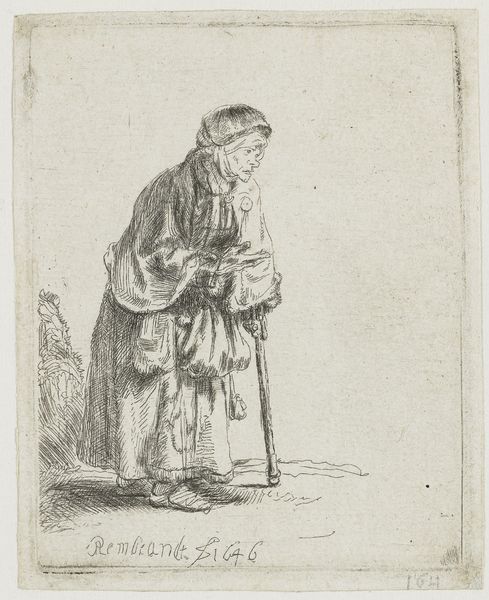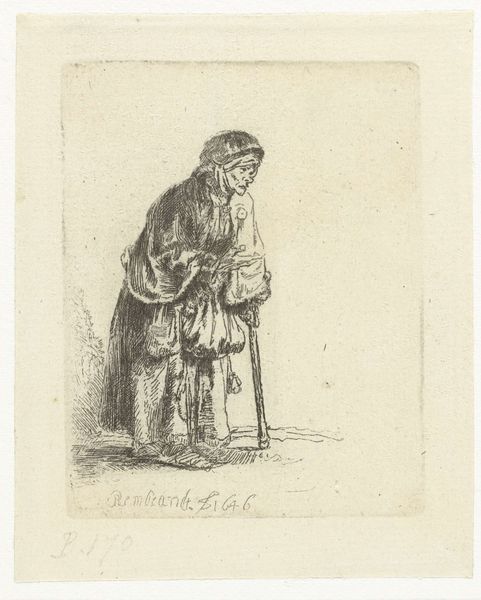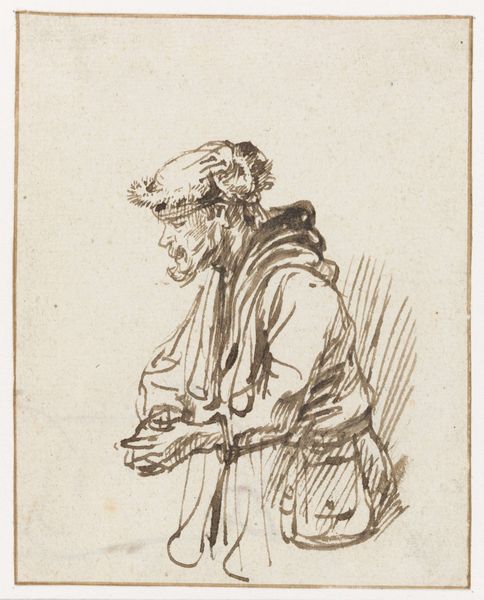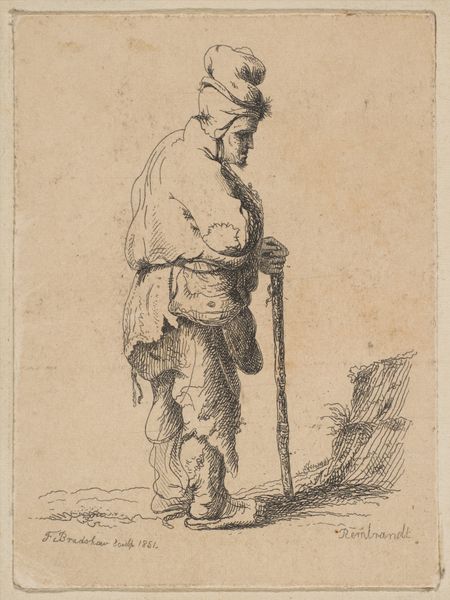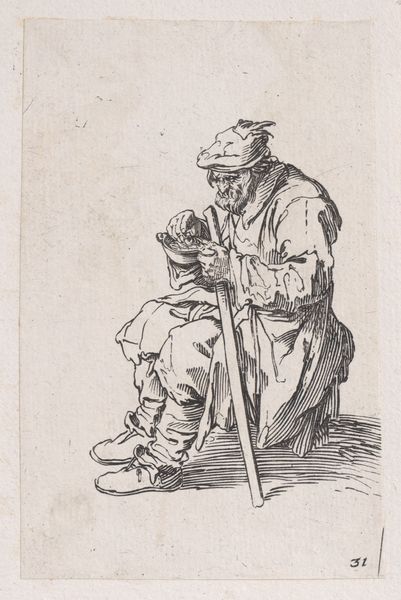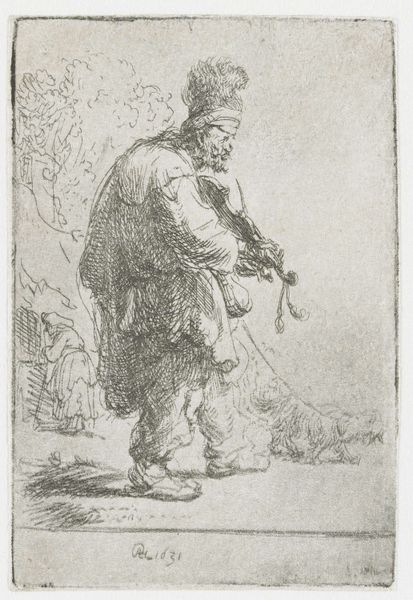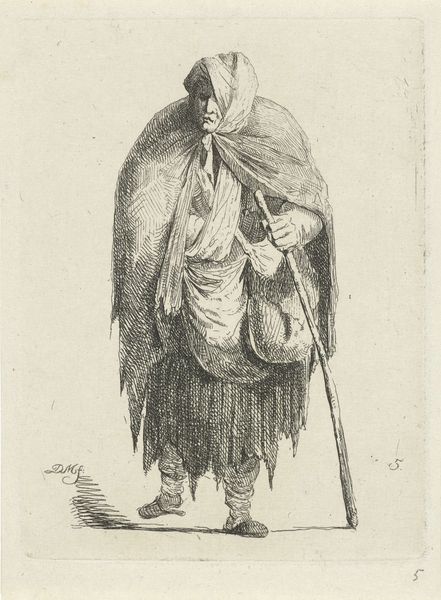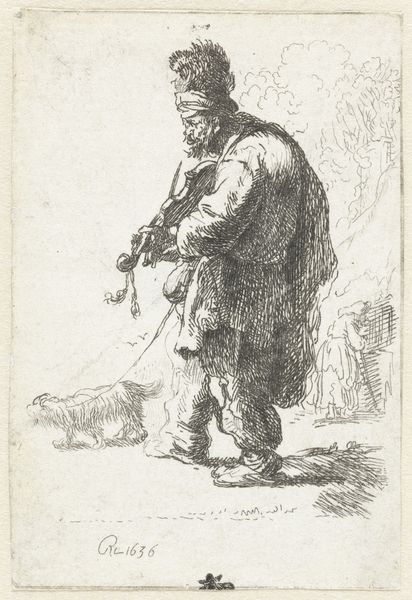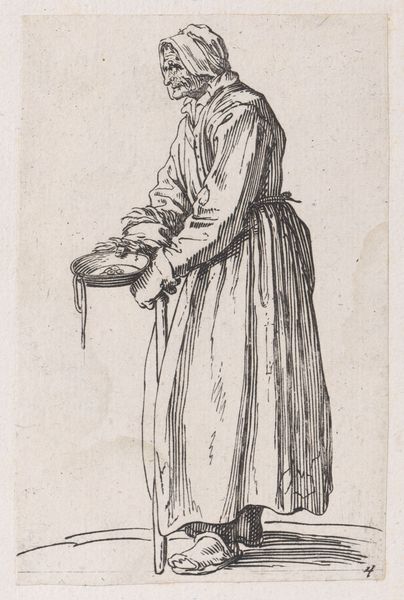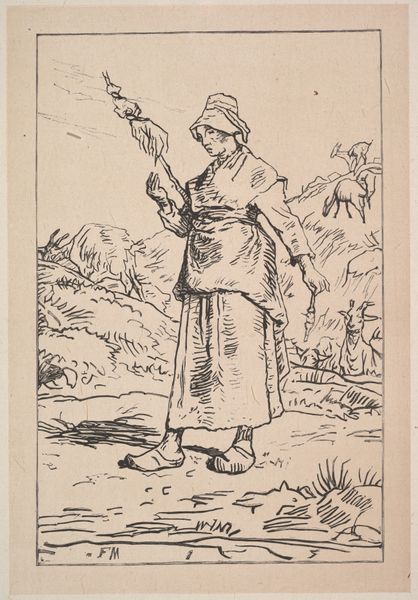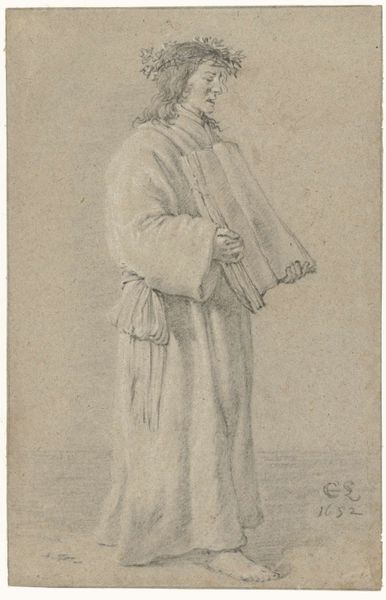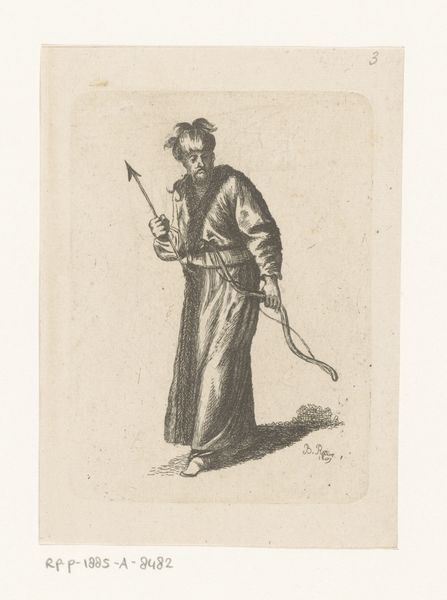
drawing, print, etching
#
portrait
#
drawing
#
baroque
# print
#
etching
#
realism
Copyright: National Gallery of Art: CC0 1.0
Curator: Ah, Rembrandt's "Beggar Woman Leaning on a Stick," created in 1646. He etched it. Quite haunting, isn't it? Editor: It is! She looks so fragile, yet sturdy at the same time. All those wrinkles… They feel more sketched than observed, like they are drawn from collective memory as much as an individual face. I sense a real melancholic depth here. Curator: Rembrandt was indeed drawn to depicting everyday life, often highlighting the marginalized. It’s thought that, within the printmaking tradition of the era, such studies provided social commentary, even offering veiled criticisms of Dutch society, with its burgeoning wealth disparity. Editor: Did such work offer commentary, or maybe reinforce stereotypes of a social class, though? I guess these are questions we're still turning over, even as we look at art so long after its making. It feels… ambiguous. Curator: A fair point. Ambiguity certainly permeates his etchings. And the etching itself—this tiny plate multiplied into many— democratized imagery. A way for a wider public to literally hold images of the dispossessed in their hands. And if we reflect upon his etching skills, there are many qualities that still fascinate audiences and artists alike. He seems to take line in different directions. It creates a very palpable, tactile sensibility! Editor: Yes, those loose, scratchy lines. He makes light emerge from darkness, using simple tools! So amazing. There's also a curious, slightly unnerving detail to how she seems so isolated, almost suspended, on this very bare ground. Everything about her says "weight," but the lightness of the etching feels so precarious. Curator: He had a singular ability to conjure volumes, life, humanity, from sparse means, which had an incredible impact. Later on in his artistic pathway, he developed a style using dark tonality to paint his inner psychological experience. Editor: I come back to this sense of weight and weightlessness and a powerful woman captured with a kind of loving attention. The idea of etching—printing an image over and over—lets this one fragile being take up many places at once. It creates visibility, in a literal and also social sense, in fascinating ways. Curator: A beautifully wrought interpretation! We both appreciate that Rembrandt offers the chance for a myriad of responses, now and forevermore.
Comments
No comments
Be the first to comment and join the conversation on the ultimate creative platform.
